Bruce Bagemihlv - Biological Exuberance - Animal Homosexuality and Natural Diversity
Здесь есть возможность читать онлайн «Bruce Bagemihlv - Biological Exuberance - Animal Homosexuality and Natural Diversity» весь текст электронной книги совершенно бесплатно (целиком полную версию без сокращений). В некоторых случаях можно слушать аудио, скачать через торрент в формате fb2 и присутствует краткое содержание. Жанр: Природа и животные, на английском языке. Описание произведения, (предисловие) а так же отзывы посетителей доступны на портале библиотеки ЛибКат.
- Название:Biological Exuberance: Animal Homosexuality and Natural Diversity
- Автор:
- Жанр:
- Год:неизвестен
- ISBN:нет данных
- Рейтинг книги:4 / 5. Голосов: 1
-
Избранное:Добавить в избранное
- Отзывы:
-
Ваша оценка:
- 80
- 1
- 2
- 3
- 4
- 5
Biological Exuberance: Animal Homosexuality and Natural Diversity: краткое содержание, описание и аннотация
Предлагаем к чтению аннотацию, описание, краткое содержание или предисловие (зависит от того, что написал сам автор книги «Biological Exuberance: Animal Homosexuality and Natural Diversity»). Если вы не нашли необходимую информацию о книге — напишите в комментариях, мы постараемся отыскать её.
Biological Exuberance: Animal Homosexuality and Natural Diversity — читать онлайн бесплатно полную книгу (весь текст) целиком
Ниже представлен текст книги, разбитый по страницам. Система сохранения места последней прочитанной страницы, позволяет с удобством читать онлайн бесплатно книгу «Biological Exuberance: Animal Homosexuality and Natural Diversity», без необходимости каждый раз заново искать на чём Вы остановились. Поставьте закладку, и сможете в любой момент перейти на страницу, на которой закончили чтение.
Интервал:
Закладка:
Although biologist J. B. S. Haldane was not (necessarily) referring to homosexuality when he spoke of the “queerness” of the natural world, little did he know how accurate his statement would turn out to be. The world is, indeed, teeming with homosexual, bisexual, and transgendered creatures of every stripe and feather. From the Southeastern Blueberry Bee of the United States to more than 130 different bird species worldwide, the “birds and the bees,” literally, are queer. 2
On every continent, animals of the same sex seek each other out and have probably been doing so for millions of years. 3They court each other, using intricate and beautiful mating dances that are the result of eons of evolution. Males caress and kiss each other, showing tenderness and affection toward one another rather than just hostility and aggression. Females form long-lasting pair-bonds—or maybe just meet briefly for sex, rolling in passionate embraces or mounting one another. Animals of the same sex build nests and homes together, and many homosexual pairs raise young without members of the opposite sex. Other animals regularly have partners of both sexes, and some even live in communal groups where sexual activity is common among all members, male and female. Many creatures are “transgendered,” crossing or combining characteristics of both males and females in their appearance or behavior. Amid this incredible variety of different patterns, one thing is certain: the animal kingdom is most definitely not just heterosexual.
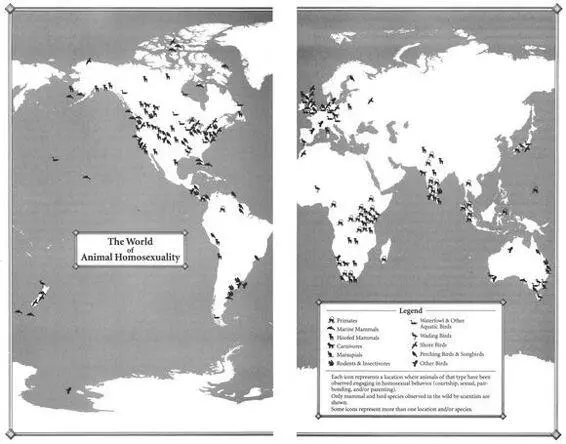
Homosexual behavior occurs in more than 450 different kinds of animals worldwide, and is found in every major geographic region and every major animal group. 4It should come as no surprise, then, that animal homosexuality is not a single, uniform phenomenon. Whether one is discussing the forms it takes, its frequency, or its relationship to heterosexual activity, same-sex behavior in animals exhibits every conceivable variation. This chapter presents a broad overview of animal homosexuality and places it in the context of a number of other phenomena involving alternative genders and sexualities.
The Many Forms of Animal Homosexuality
For most people, “homosexuality” means one thing: sex. While it’s true that animals of the same gender often interact sexually with each other, this is only one aspect of same-sex expression. Animal homosexuality represents a vast and diverse range of activities: it is neither a monolithic nor an exclusively sexual phenomenon. This section offers a survey of the full range of homosexual activity found in the animal world, organized around five major behavioral categories: courtship, affection, sex, pair-bonding, and parenting. While these categories are not mutually exclusive and often blend imperceptibly into one another, they offer a useful introduction to the multiplicity of homosexual expression in the animal kingdom.
A word on terminology is in order. In this book, heterosexuality is defined as courtship, affectionate, sexual, pair-bonding, and/or parenting behaviors between animals of the opposite sex, while homosexuality is defined as these same activities when they occur between animals of the same sex. When applied to people, the terms homosexual, gay, or lesbian can refer either to a particular behavior when it occurs between two men or two women, or to an individual whose primary “identity” involves any or all of these activities. Since the notion of identity is inappropriate to ascribe to animals, these terms will be reserved for the behaviors that animals engage in and, where relevant, to describe individuals whose primary “orientation” is toward animals of the same sex where courtship, sexual, and/or pair-bonding activities are concerned. In addition, because the terms gay and lesbian have particularly human connotations, these will generally be avoided in favor of homosexual(ity) or same-sex (although it must be remembered that each of these words can have specific meanings independent of their human connotations when used in relation to animals, and they are employed as cover terms for widely divergent activities even among humans). When a particular individual engages in both homosexual and heterosexual activity, these words are limited to describing the animal’s specific behaviors (depending on the gender of the animal’s partner), while the animal itself is described as bisexual. 5
Pirouette Dances, Ecstatic Displays, and Triumph Ceremonies: Courtship Patterns
To attract the attention and interest of a potential partner, animals often perform a series of stylized movements and behaviors prior to mating, sometimes in the form of a complex visual or vocal display. This is known as courtship behavior, and it usually indicates that one animal is advertising his or her presence to prospective mates or is sexually interested in another individual. If the interest is mutual, this may lead to mating or other sexual activity and possibly pair-bonding (for example, in birds). Some animals also use special courtship behaviors to conclude, as well as initiate, sexual activity, or to reinforce their pair-bonds. Courtship behavior is a common feature of homosexual interactions, occurring in nearly 40 percent of the mammals and birds in which same-sex activity has been observed.
Same-sex courtship assumes a dizzying array of forms, and zoologists often use evocative or colorful names as the technical terms to designate these most striking of animal behaviors (which are usually part of heterosexual interactions as well). Many species perform elaborate dances or kinetic displays, such as the “strutting” of female Sage Grouse, who spread their fanlike tails; or the spectacular acrobatics and plumage displays of Birds of Paradise and Superb Lyrebirds; or the courtship encounters of Cavies, who “rumba,” “rumble,” “rump,” and “rear” each other in an alliterative panoply of choreographed behaviors. In other cases, subtler poses, stylized postures, or movements are used, such as the foreleg kicking found in the courtship displays of many hoofed mammals; “rear-end flirtation” in male Nilgiri Langurs and Crested Black Macaques; ritual preening and bowing during courtship interactions in Penguins; “tilting” and “begging” postures in Black-billed Magpies; “jerking” by female Koalas; and “courtship feeding”—a ritual exchange of food gifts seen in same-sex (and opposite-sex) interactions among Antbirds, Black-headed and Laughing Gulls, Pukeko, and Eastern Bluebirds. Sometimes two courting individuals perform mutual or synchronized displays, such as the “triumph ceremonies” of male Greylag Geese and Black Swans; the “mutual ecstatic” and “dabbling” displays of Humboldt and King Penguins, respectively; synchronous aquatic spiraling in male Harbor Seals and Orcas; the elaborate “leapfrogging” and “Catherine wheel” courtship displays by groups of Manakins; and synchronized wing-stretching and head-bobbing in homosexual pairs of Galahs. Many birds have breathtaking aerial displays, including tandem flying in Griffon Vultures, shuttle displays and “dive-bombing” in Anna’s Hummingbirds, “hover-flying” in Black-billed Magpies, “song-dancing” in Greenshanks, and the “bumblebee flight” of Red Bishop Birds.
A male Superb Lyrebird (foreground) courting a younger male in the forests of Australia. He is singing and performing the dramatic “full-face display,” in which he fans his elaborate tail plumes forward over his head.

Интервал:
Закладка:
Похожие книги на «Biological Exuberance: Animal Homosexuality and Natural Diversity»
Представляем Вашему вниманию похожие книги на «Biological Exuberance: Animal Homosexuality and Natural Diversity» списком для выбора. Мы отобрали схожую по названию и смыслу литературу в надежде предоставить читателям больше вариантов отыскать новые, интересные, ещё непрочитанные произведения.
Обсуждение, отзывы о книге «Biological Exuberance: Animal Homosexuality and Natural Diversity» и просто собственные мнения читателей. Оставьте ваши комментарии, напишите, что Вы думаете о произведении, его смысле или главных героях. Укажите что конкретно понравилось, а что нет, и почему Вы так считаете.
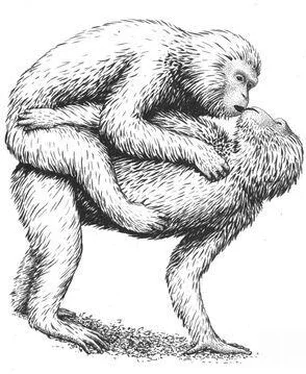

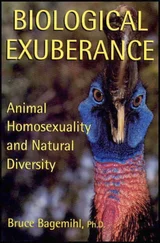
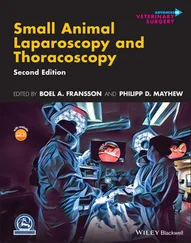
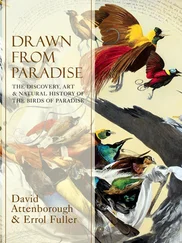

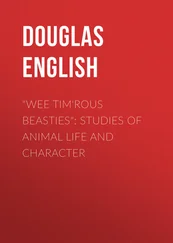
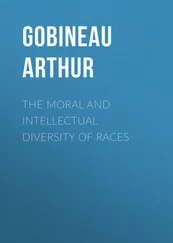
![Various - Birds and Nature, Vol. 10 No. 1 [June 1901]](/books/745231/various-birds-and-nature-vol-10-no-1-june-1901-thumb.webp)
![Various - Birds and Nature Vol. 10 No. 5 [December 1901]](/books/745236/various-birds-and-nature-vol-10-no-5-december-1-thumb.webp)

![Various - Birds and Nature, Vol. 12 No. 5 [December 1902]](/books/745517/various-birds-and-nature-vol-12-no-5-december-thumb.webp)
![Various - Birds and Nature Vol. 11 No. 2 [February 1902]](/books/745533/various-birds-and-nature-vol-11-no-2-february-1-thumb.webp)